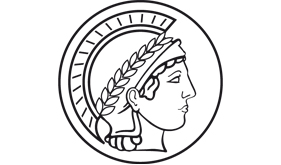A moral? How? What does morality have to do with mathematics and its history? Firstly, “a moral”—that of a fable—is not the same thing as morality. The moral of a fable represents the meditation that offers itself after the reading, “what can we learn from this”? In this sense, not only fables but also texts that tell history have often had the aim to suggest a moral—at least since the time of Herodotus and the Hebrew scribes who related the events of the times of Saul and David (or the fables about these presumed events).
In this sense too, the history of mathematics, and histories of mathematics, have their morals. The first interpretation of Old Babylonian algebra carried the implicit message that they had the same kind of mathematics as we. They only did not have that wonderful algebraic symbolism that has allowed us to go even further; and they also had not “discovered” the negative numbers (which in second-hand recycling was transformed into a conviction that they had discovered them). They had not yet progressed as far we have, but they were on the same track—the only track, the track toward us. With an easily deducted corollary: the fact that our track is the only track is a guarantee that what we do coincides with progress, and that all the others—other civilizations, and school students who have not yet understood—must learn to follow it. Another corollary, perhaps not quite as close at hand, nor however too far-fetched: what holds for mathematics might hold for other aspects of civilization: we are progress incarnate and verified.
This message disappears with the new interpretation. Old Babylonian mathematics certainly has many similarities with contemporary “world mathematics”—probably more than any other foreign mathematical culture (we build so directly on ancient Greek and medieval Arabic mathematics that we cannot consider them “foreign”). But the differences are conspicuous, concerning methods as well as aims and mode of thought. What we can learn from the new interpretation is thus that mathematics can be thought in different ways, and that one should always listen to the other (the other epoch studied by the historian, or the partner of the teacher, that is, the student) before deciding what this other must have thought and should think. If mathematics can be thought in different ways, then there is no guarantee that ours is in all respects the best possible—not even for ourselves, and even less in impersonal and supra-historical generality. However, by listening we may come to understand better our own practice and mode of thought, and to better ponder whether ours is one of the fruitful ways—perhaps even which fruits it promises.
The progress found in the history of mathematics is not a one-way motor road (in any case a thing never seen outside the world of metaphors!). In an image formulated by the historian of mathematics Moritz Cantor in 1875, it is to be compared to a river landscape with so many streams—streams which, with bends and turns, bifurcations and reunifications, have a tendency to run in the same direction toward the same ocean. If progress exists in the history of civilizations, it will be of the same kind.
